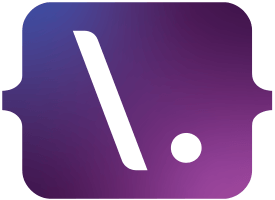
Issue 731
17th October 2025
Written by Dave Verwer
Comment
There has been plenty of criticism of Liquid Glass, both during the beta and since its official release. One article I read this week was Raluca Budiu’s critique of both Liquid Glass as a design language and the general lack of attention to detail in the macOS 26 UI. The biggest legibility issue, in my opinion, especially on iOS, is when text overlays on top of other text:
Apparently, designers decided users have eagle vision and infinite patience, because deciphering one line of text written across another is now fair game. Reading an email subject line now requires Dan Brown-level cryptographic decoder skills.
It’s usually easy enough to make text or controls on top of content legible if you scroll by a few pixels, but that’s not really the point. There’s no question that Liquid Glass is a step back for legibility.
It’s also not just about legibility and Liquid Glass. There’s a significant amount of criticism of other aspects of the operating systems, from John Ozbay wondering what happened to Apple’s legendary attention to detail? to Adam Engst questioning whether prioritising content over tools is the correct decision.
Michael Tsai, as always, has put together a great round-up of Liquid Glass comments from social media. It’s not entirely negative, but it’s certainly leaning in that direction.
The last time we talked this much about an operating system design was iOS 7, which Louie Mantia refers back to in his commentary on Liquid Glass from the early betas, and that turned out fine in the end, even if it did take a few years of iteration to properly settle down.
There are ways to turn at least the Liquid Glass portion of the design system off, although Adam, who wrote that article, doesn’t recommend it:
I can’t recommend turning off Liquid Glass entirely in this way. Although it does make macOS 26 look more like macOS 15, it suffers from several glaring mistakes that Apple has no incentive to fix. Stick to Reduce Transparency and add Increase Contrast if your eyes would appreciate it.
Maybe the most interesting thing about Liquid Glass is the conversations and critique that it has sparked. No matter how you feel about it personally, we’re once again debating what “good design” on Apple platforms means, and that’s always a worthwhile subject for discussion. I’m quite sure the design and human interface teams in Cupertino are watching closely, too.
– Dave Verwer
Sponsored Link
Add Barcode and Document Scanning with One Line of CodeLet users scan barcodes and documents effortlessly, and generate crisp PDFs with the Genius Scan SDK. Enjoy local processing for performance and privacy: real-time detection, perspective correction, image enhancement, OCR, and data extraction—no more blurry documents! Try it today.
Tools
Build, run, debug, and test your Swift apps in ZedThis isn’t just an article about what you could do in theory – I built my new app, DelayDrop, mainly in Zed. It’s a pleasure to work in a genuinely good code editor, and switching into Xcode for things like previews really isn’t an imposition.
I really like Zed, and it’s replaced VS Code for any front-end CSS or JavaScript work I do, as well as for editing things like JSON, YAML, and XML. If you’re interested in using it for Swift work, Adrian has written up two articles: Build, run, and debug iOS and Mac apps in Zed instead of Xcode and Now you can test Xcode apps and Swift packages in Zed.
Code
Advanced CodableThere’s a nice set of Codable tips and tricks in Alan Kantz-Durand’s latest post. I especially liked the idea of a Maybe:
A
Maybetype is an enum that can represent either a value or an error. You can think of it as an Optional with context, or as a more-restrictive Result.
Who’d have thought so many words could be written about encoding and decoding data? Not just in Alan’s post, but in general. 😬
Foundation Models profiling with Xcode Instruments
Artem Novichkov runs through how Instruments can help you profile the speed of the requests you’re passing through to Apple’s foundation model. It can be slow, and it’s worth finding out if it’s purely the request, or if it’s the code you wrap around it.
When does SwiftUI automatically apply the glass look?
Talking of glass, Natascha Fadeeva explains when SwiftUI’s new glass button style (introduced in iOS 18) is automatically applied to toolbar items in system placements versus when manual styling is required to get the glass effect.
Caveat Emptor
I’ve encountered a few people who subscribe to a fundamentalist view of open source code: that it’s useless unless it is fully polished, fully tested, 100% supported.
I understand this point of view; we’ve all encountered code that makes great claims and turns out to be broken or mostly unfinished.
Respectfully though, those people are wrong.
I couldn’t agree more! Don’t be embarrassed to release anything, and you don’t need to support it any more than you want to. You owe people nothing when you select “Public” for your repository permissions.
Jobs
iOS Product Engineer @ Tolan – At Tolan, we’ve built the world’s first voice-native embodied AI companion in a Swift 6 app, working alongside an Apple Design Award winning creative team to bring the Tolan characters to life. We work hard, with a high degree of autonomy and ownership. We work together in-person in downtown SF. – On-site (United States in CA) with some remote work (within US timezones)
